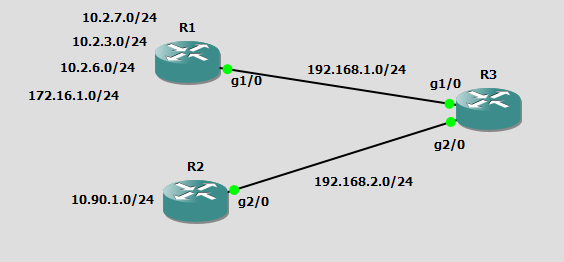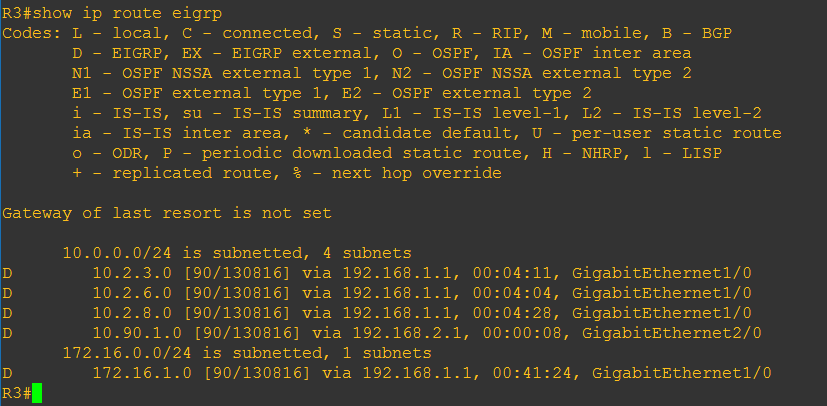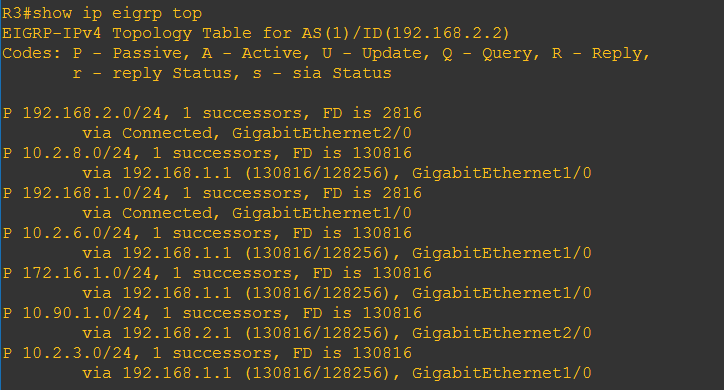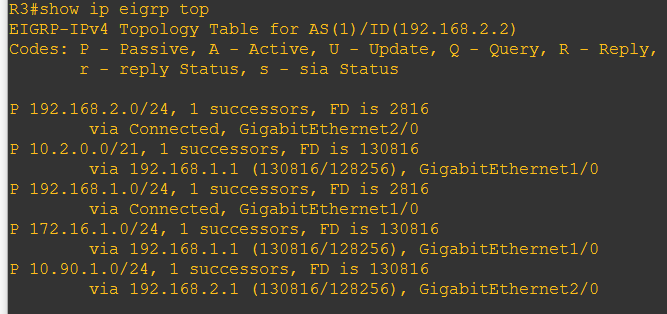EIGRP Summarization is used to simplify our routing table and advertise a summary instead of a bunch of prefixes that look the same.

My current network topology is simple, I’ve basically configured EIGRP, then used the “network 0.0.0.0” command to advertise everything and form neighbors.
Here is what my routing table looks like for EIGRP learned routes.

You can see how this can get overwhelming if we have a lot of networks that look the same. The topology is growing too.

Since, by design, all those networks are very similar, I can summarize those routes. This will shrink our routing and topology table. To summarize routes you need to configure manual summarization on the router where those prefixes live. In my case this is R1. You need to configure this on the interface connected to the neighbor where you want to send the summary route to.
I’ll just do some quick binary math (in my head because I’m cool, 5 bits should be enough) and then configure it.
On R1:
enable configure terminal interface g1/0 ip summary-address eigrp 1 10.2.0.0/21
Simple as that, now let’s check R2 and R3.


Perfect, we see our networks have been grouped! The EIGRP topology is smaller too.

You will notice on R1, where we did the summarization, we see a route to Null0 for the network.

Null0 is the interface where you send traffic that you want to black-hole. It’s called the Null Adjacency. (Google CEF NULL Adjacency)
Does this mean that all traffic to this network is lost? Nope. The null summary route is there to prevent routing loops and wasting CPU cycles.
Since we summarized the networks as 10.2.0.0/21 we are covering 2.2, 2.5 etc… However these networks don’t even exist! Instead of us forwarding traffic somewhere for these networks, they go to the black-hole. If we were to route these somewhere and the packets return to us, we would cause a routing loop (which would expire in transit but wastes cycles and BW). Since the most exact route always wins, we know our packets for our real networks always make it there. Routing traffic to NULL0 is very common, especially in BGP. If we somehow got packets destined for e.g. 10.2.5.1, that traffic will be routed to us, and then sent to the Null Adjacency, which drops it (This is done in hardware and doesn’t waste CPU cycles). If all of our networks on the left somehow die or go away, the summary will still be alive assuming the neighborship is. That is where the Null Adjacency can come in handy again.